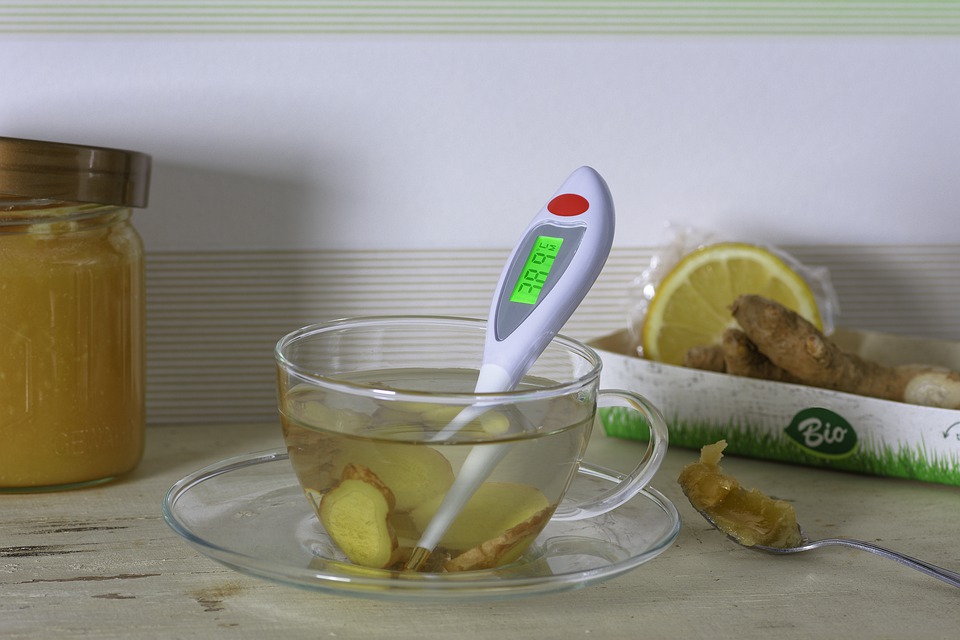Bronchitis is an inflammation of the bronchi, which serves as the main airways to the lungs. There are two main types of bronchitis. Acute bronchitis is usually caused by the same viruses that cause the common cold and get better within a few days. Chronic bronchitis, on the other hand, is a form of chronic obstructive lung disease. Chronic bronchitis, which is often caused by cigarette smoking or prolonged inhalation of fumes and dust, results in long-term breathing problems.
Several proven home remedies can be used to combat the symptoms of bronchitis effectively. They relieve coughing, have anti-inflammatory or expectorant effects, and reduce the need for medication. Here are some natural remedies you can use:
Onion Juice
Onions contain valuable substances that loosen mucus in bronchitis and facilitate expectoration (getting phlegm out by coughing or spitting). Moreover, it is usually available in every household and therefore ideal as a home remedy.
Instructions:
-Cut onions into cubes.
-Cover the cubes with honey in a sealable jar.
-Close the jar and place it in the oven on medium heat.
-When the onions are oozing juices, remove the jar from the oven and pour the onion pieces.
-Leave it to infuse overnight in the fridge.
-Use: Take one tablespoon three times a day.
Inhalation With Herbs or Essential Oils
Inhalations with herbs or essential oils are also a classic home remedy for colds. They moisten the upper respiratory tract and have a beneficial effect. Steam inhalers from the pharmacy are particularly suitable for this. They allow you to inhale specifically through the mouth and nose, thereby preventing eye irritation. If you do not have a steam inhaler to hand, you can also inhale traditionally over a bowl of steam water and a towel over your head.
Instructions:
-Boil 2-3 liters of water and pour it into a container.
-Add 2-3 tablespoons of dried herbs (e.g., anise, fennel, mint, chamomile, or thyme) or essential oil (e.g., peppermint, eucalyptus, thyme) to the hot water (one drop per liter of water).
-Hold your head over the container and, if necessary, place a towel over your head to intensify the inhalation.
-Inhale the steam slowly, deeply, and evenly.
-Use: once or twice a day for 10-15 minutes.
Note: Inhalation of essential oils is not suitable for infants, children, and asthmatics.

Quark Wraps (Curd Compress)
Wraps provide warmth to the body and transport healing substances through the skin to inflamed areas. Curd compresses involve lactic acid bacteria, which have an expectorant and anti-inflammatory effect. In the case of bronchitis, a curd compress is used at body temperature.
Instructions:
-First, heat the curd to body temperature.
-Spread about half an inch of curd on a cloth or wrap.
-Apply the curd wraps to the chest and, if necessary, fix them with a thin gauze bandage.
-Application time: at least 30 minutes – preferably until the curd starts to dry.
-Afterwards, dry the skin well and stay warm.
Use: once a day.
Note: Do not apply curd compresses directly to the skin, as dried curd is difficult to remove from the body.
Tea
Warm tea is probably the most common home remedy for any cold and is an indispensable part of bronchitis treatment. The heat of the tea is transferred to the airways and keeps the fluid in the mucus. In addition, some herbs for bronchitis have beneficial and anti-inflammatory effects.
Instructions:
-Drink at least 2-3 liters a day
-Herbal teas with sage, thyme, yarrow, and fennel, which are best obtained from a pharmacy, are particularly suitable.
-Ask your pharmacist for advice on choosing a blend.
-It is best to sweeten the tea with honey.

Salt Inhalation
When inhaling with an isotonic salt solution, the solution is sprayed in tiny droplets (aerosol) that penetrate particularly deep into the airways. There, they promote the cleansing function of the mucous membranes and thus contribute to an improved immune defense. Therefore, this inhalation is also recommended for patients with chronic bronchitis and chronic obstructive bronchitis to prevent acute infections in the cold season.
To form the correct droplet size, the saline solution is nebulized using a nebulizer and then inhaled. Ultrasonic or jet nebulizers are available in pharmacies. Ask your doctor or pharmacist for advice when choosing a device.
Instructions:
-Dissolve a teaspoon of table salt (about 9 g) in 1 liter of water.
-The lukewarm solution is then inhaled by mouth using a nebulizer.
-The solution should be kept for a maximum of 24 hours.
The ready-made salt solution is also available in small packets at the pharmacy.
If your symptoms do not get better, make sure to consult your doctor!


